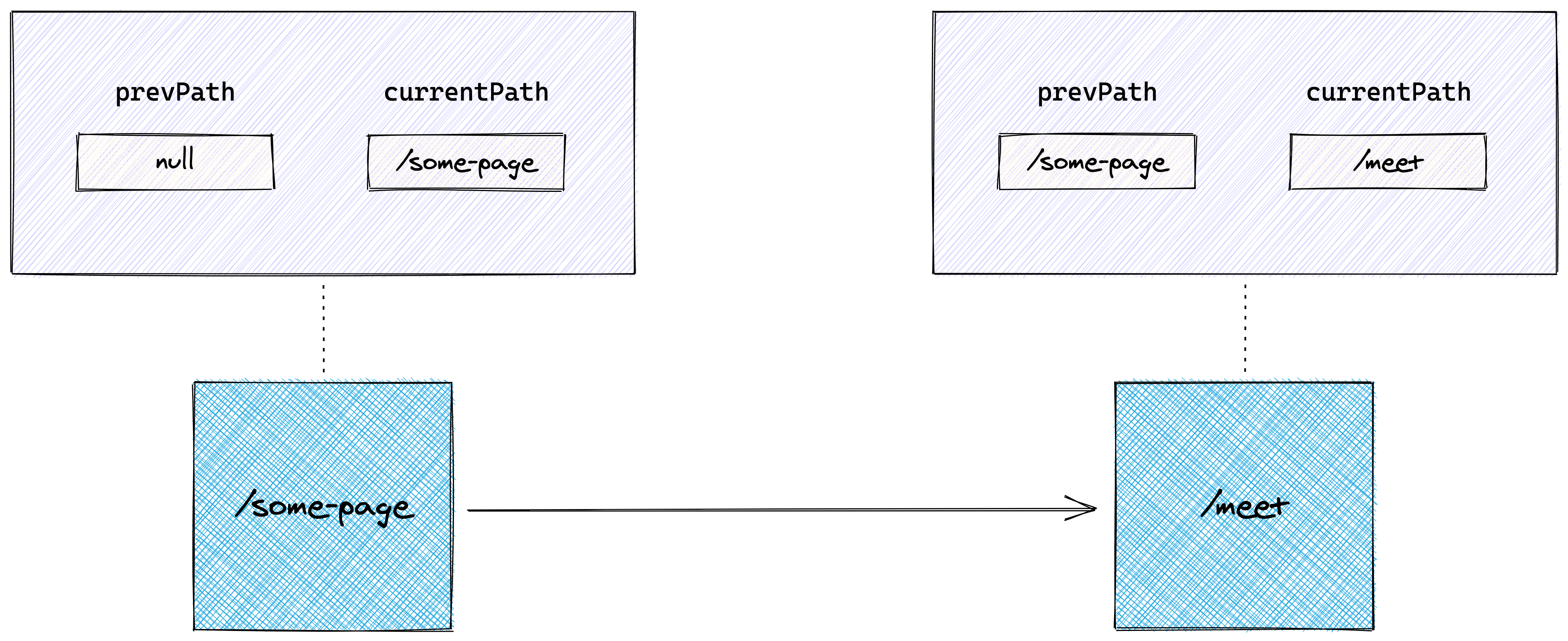The Grouparoo Blog
Get user's Previous Path with NextJS Router
Tagged in Engineering NotesBy Sean C Davis on 2021-02-17
We have a form on our meet page (which, BTW, we'd love you to fill out because we like meeting new people). In addition to the data input from the user, we also wanted to capture how that user got to the page. That helps us determine which of our content is most effective in getting website visitors to take action.
The document.referrer Attempt
My gut was to start with document.referrer. I've used it in the past with some success and it seemed like a simple solution.
The official spec says document.referrer should do this:
Returns the URL of the Document from which the user navigated to this one, unless it was blocked or there was no such document, in which case it returns the empty string.
We have two problems with this approach:
- If the user came from a different site, we won't have a referrer. I'm okay with this, because we really just wanted to measure the effectiveness of the content we're creating (for now).
- If the user navigated using a Next.js
<Link />component, or the Next router, it will also be an empty string (i.e. no referrer).
The latter issue was a deal-breaker because a good portion of the links within the site made use of Next's router, which provides a more performant experience for the user.
Tracking the Current and Previous Page with sessionStorage
Although it feels a little hacky, we figured that we could do a little current-previous-current dance on every page load, using either localStorage or sessionStorage to store the values. It would work like this:

We decided on sessionStorage over localStorage because the session storage is cleared when the window or tab is closed. So if we have a previous page, then we can reasonably assume that's where the user came from. And we don't have to worry about clearing it when the page is unloaded.
To accomplish this, we used a React's useEffect to adjust these values in our _app.tsx file when the router's path changed. It looks like this:
// File: pages/_app.tsx
import { useRouter } from "next/router";
import { useEffect } from "react";
export default function GrouparooWWW(props) {
const router = useRouter();
useEffect(() => storePathValues, [router.asPath]);
function storePathValues() {
const storage = globalThis?.sessionStorage;
if (!storage) return;
// Set the previous path as the value of the current path.
const prevPath = storage.getItem("currentPath");
storage.setItem("prevPath", prevPath);
// Set the current path value by looking at the browser's location object.
storage.setItem("currentPath", globalThis.location.pathname);
}
// ...
}
Every time the router.asPath value changes, storePathValues fires, which adjusts our prevPath and currentPath values.
With this approach we are only capturing local traffic. But we don't have to worry about any special way of linking to the /meet page. It just does its thing behind the scenes, regardless of whether the link to the page used Next's router or not.
If you're still super curious, here is the PR to our website that introduced this change.
Tagged in Engineering Notes
See all of Sean C Davis's posts.
Sean is a tinkerer and a teacher who enjoys long walks in the woods, spending time with his family, baking bread, playing music, and eating sandwiches.
Learn more about Sean @ https://www.seancdavis.com/
Get Started with Grouparoo
Start syncing your data with Grouparoo Cloud
Start Free TrialOr download and try our open source Community edition.